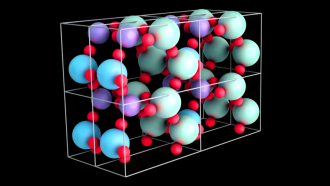Photo Credits: Siddharth Kankaria/ Research Matters
Advancements in science, especially those pertaining to technology is often motivated by real life problems. The research at the Biomaterial and Tissue Engineering Laboratory at the Indian Institute of Science, Bengaluru, headed by Dr. Kaushik Chatterjee of the Department of Materials Engineering, fits this narrative. The lab tries to make use of material technologies to address biomedical challenges. Their recent work focuses on developing a synthetic polymer using nano-technology that can be used as substitutes for bone grafting.
“Bone is one of the most widely transplanted tissues of the human body. Currently bone grafts used in the clinic have several problems like high cost, occasional infections, need for multiple surgeries, etc. We are working towards using plastics or synthetic polymers to solve this clinical challenge”, says Dr. Sachin Kumar, who recently completed his Ph.D. from the lab.
A wide variety of natural and synthetic polymers that are non-toxic, degrade in the body over time to be absorbed or excreted safely, are used in biomedical applications today. These properties are necessary and often are sufficient. But in the case of bone, these plastics may be too soft and lack other properties to help in regeneration. Is there a method to enhance the biomedical properties of these polymers so that they could have orthopaedic applications? Under the guidance of Dr. Chatterjee, Dr. Sachin Kumar set out to find a method to enhance the biomedical properties of these polymers so that they could have orthopaedic applications. He was aided by Mr. Shammy Raj and Mr. Shubham Jain during various stages of the research.
It is well documented that at nano-scale, compounds behave differently. Graphene is a thin sheet of carbon atoms with nanoscale thickness and its discovery recently led to a Nobel prize. A hybrid system of graphene sheet decorated with silver nano-particles is known to have many interesting properties; including high anti-bacterial and electrical property. Having known these properties, the researchers prepared polymer composites of poly(ε-caprolactone) (PCL), a biodegradable polyester incorporated with these nanoparticles. The lab found the resultant composite material to be not only non-toxic but also anti-bacterial. Cell studies showed that the composites were not toxic and in fact supported the differentiation of stem cells to bone cells, making this material particularly useful for orthopaedic applications.
Dr. Kaushik Chatterjee simplifies the essence of this technological innovation for us. “Nanotechnology offers unique solutions. What is remarkable is that when nano-particles of metallic silver are prepared on graphene nano-sheets and then added into the polymers, the materials exhibit a unique set of properties that would be ideal for use in bone regeneration”, he explains.
In addition to being suitable for bone grafts, the composite was observed to have electrical conductivity as well. This property could make this material useful in designing biodegradable electronic components that can be recycled for eco-friendly, sustainable use.
Does this mean we have the 'perfect' artificial bone graft by our side? Like all scientific discoveries, especially in the field of medicine, further research and trials have to be carried out before such claims are made. “These studies need more detailed validation especially tests in animal models before human trials. With several approaches being actively researched in this field, we are progressing toward the clinical use of such technologies as new alternatives for repairing and regenerating damaged tissues and organs of the human body that could eventually help to bridge the gap between the demand and supply of donor organs”, signs off Dr. Chatterjee.
This work was funded by the Department of Science and Technology (DST), India.

























